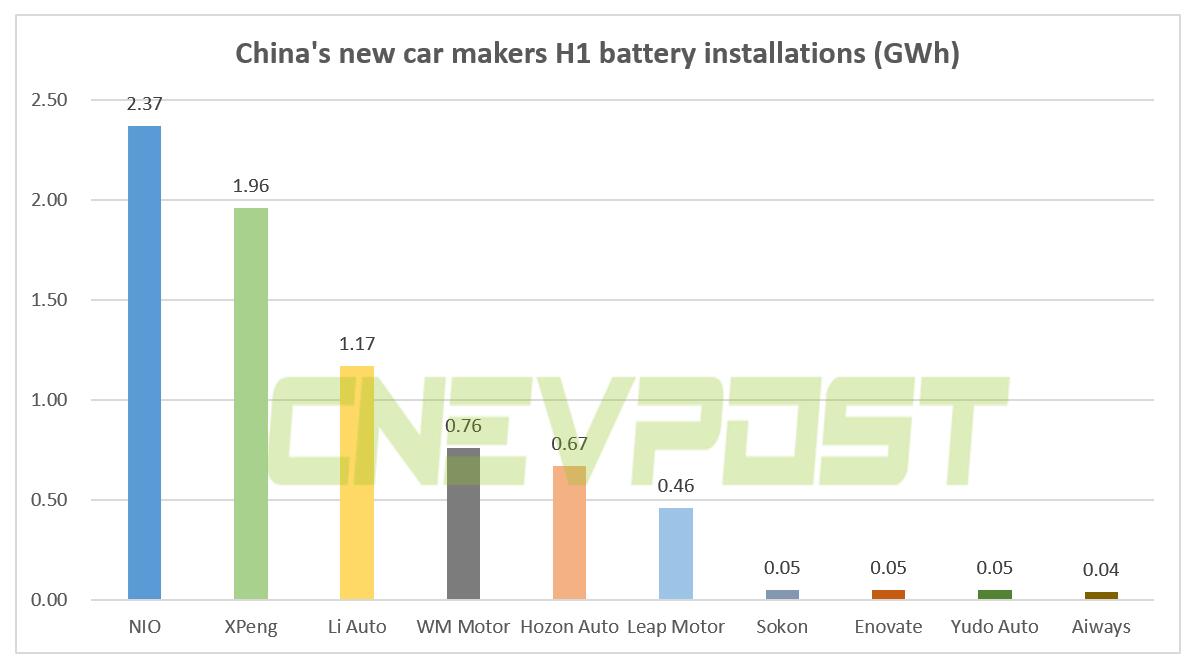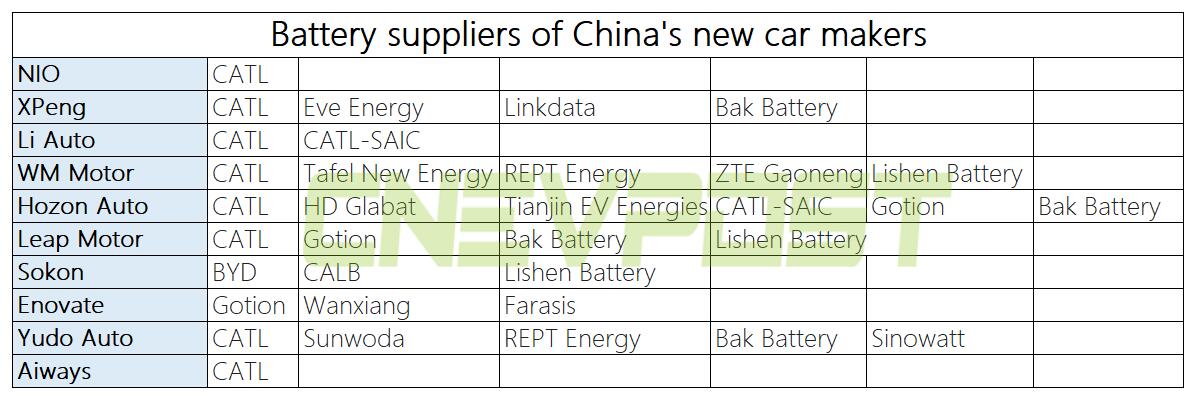As the highest delivered brand among China's new car makers, Nio also has the highest installed battery capacity.
Nio's first-half battery installation of 2.37 GWh was the highest among China's new car makers, according to a new report from market research firm Gaogong Industry Institute (GGII).
That makes Nio the second-largest passenger car customer of CATL, China's largest power battery supplier, after Tesla, the report said.
(Data source: GGII. Graphic by CnEVPost)
Citing insurance registration data, the report said China's new energy vehicle sales in the first half of the year were 1.03 million units, up 214 percent year-over-year. The installed capacity of power batteries was 46.39 GWh, up 177 percent year-over-year.
Among them, the installed battery capacity of new energy passenger cars was 41.17 GWh, up 234% year-over-year, accounting for 89% of the overall installed capacity.
Continued growth in product deliveries from new car makers including Nio, Xpeng Motors, and Li Auto drove a significant increase in installed passenger car capacity in the first half, the report said.
The 10 new car makers, including Nio, Xpeng and Li Auto, installed 7.6 GWh of batteries in the first half, accounting for 18.4 percent of all passenger cars.
Nio, Xpeng, and Li Auto's installed battery capacity exceeded 1 GWh in the first half, with Nio being the only brand to exceed 2 GWh.
With further growth in sales in the second half of the year, these car companies are expected to double their installed battery capacity for the year, which in turn will drive further growth in the installed capacity of power battery suppliers, the report said.
Nio has become CATL's second largest passenger car customer, behind Tesla; Xpeng is Eve Energy's top passenger car customer in China, and Leap Motor is Gotion's core passenger car customer.
This means that leading new car makers have become core customers of power cell companies, which will have more opportunities for growth, the report said.
New car makers tend to choose two to three core battery suppliers due to demand for early development products and to secure supply stability, except for Nio.
All three of Nio's current SUV models are supplied with batteries from CATL. The battery supplier for its flagship sedan ET7 is unknown.
Xpeng and Li Auto were mainly supplied by CATL in the early stages, but new suppliers including Eve Energy and CATL-SAIC were introduced in the later stages.
(Data source: GGII. Graphic by CnEVPost)
The installed capacity of LFP batteries in the first half of the year was 17.38 GWh, up 273% year-over-year. The installed share increased to 37.5% from 27.8% in the same period last year, mainly driven by the growth of installed capacity of passenger cars.
Car companies including Xpeng, Leap Motor and Hozon Auto have launched models using LFP batteries, with cells mainly from CATL and Gotion.
As other new car makers launch models using LFP batteries at a later stage, this is expected to drive further growth in the installed capacity of LFP batteries in passenger cars, the report said.


